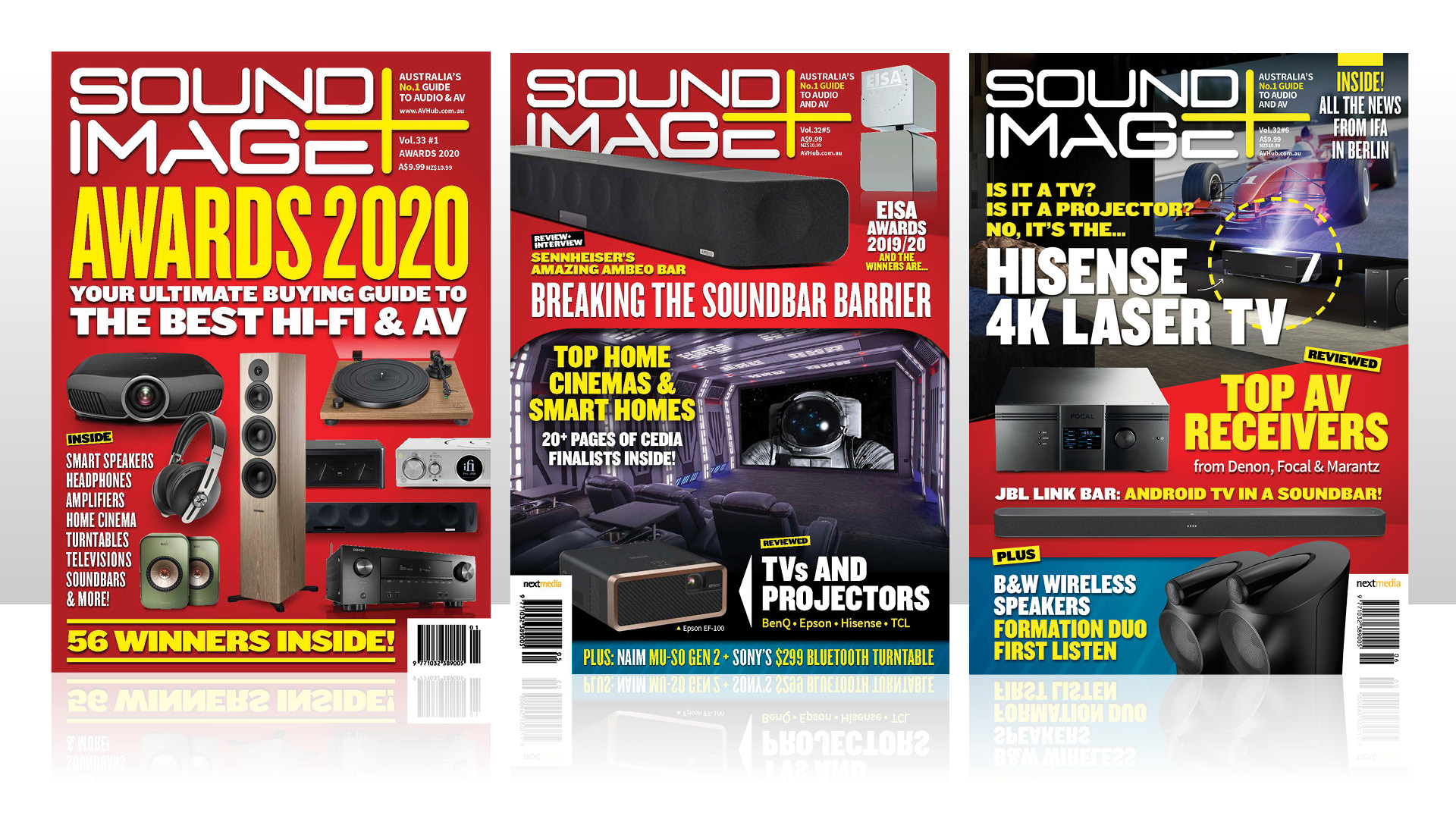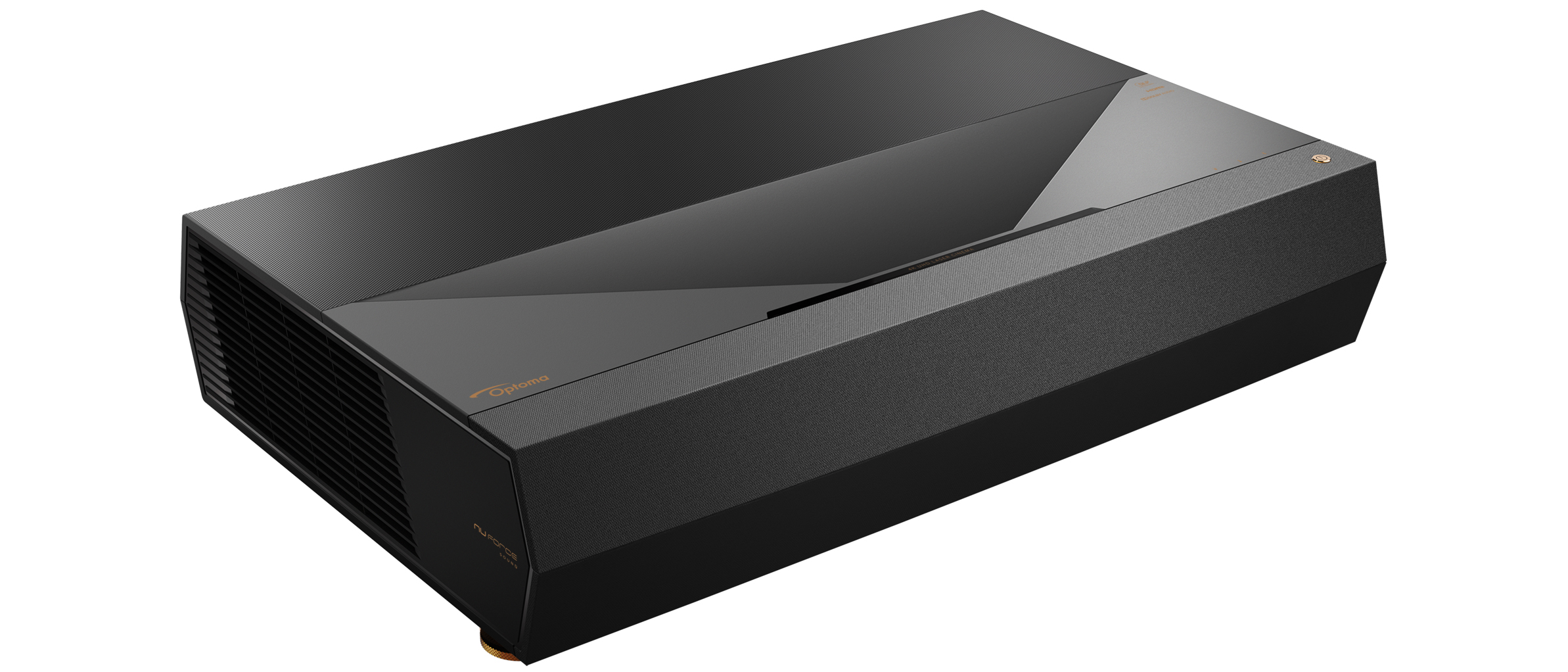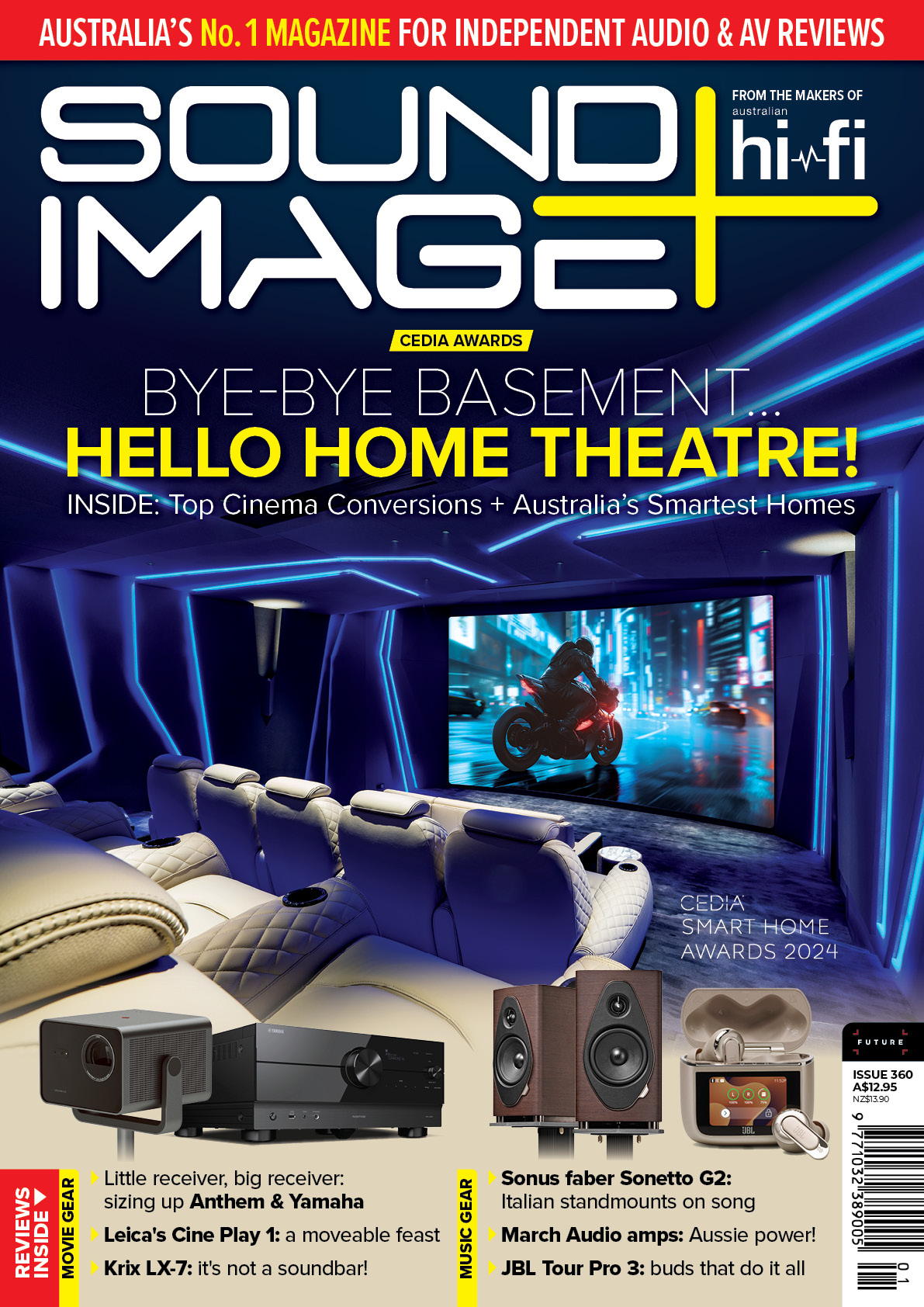Sound+Image Verdict
Bigscreen projection has always required a system to be built around the projector – cabling, HDMI switching, separate audio. But the Optoma P1 is a new breed of ultra-short-throw that's doing away with all that, making bigscreen delivery far easier.
Pros
- +
Versatile, easy set-up
- +
Great image for HD and UHD
- +
Long-life laser light
- +
Integrated sound system
Cons
- -
Budget for a screen
- -
Seperate sound system recommended
Why you can trust What Hi-Fi?

This review originally appeared in Sound+Image magazine, one of What Hi-Fi?’s Australian sister publications. Click here for more information on Sound+Image, including digital editions and details on how you can subscribe.
There’s a new breed in town, and it’s breaking down the differences between projectors and TVs.
These two display technologies have long been separated by a number of fundamental differences. Projectors have required installation on the ceiling or at the back of the room with the tricky task of running HDMI cables to them. An AV receiver has been required, both as an input hub (because projectors have only one or two HDMI inputs), and to deliver audio, because projectors don’t do audio.
And projectors use bulbs, which require regular replacement, whereas a TV just carries on working, at least until it doesn’t. And TVs have all the benefits of smart interfaces and internet connections for streaming services, whereas projectors are plain old dumb.
The Optoma P1 sweeps these differentiations aside. It’s an ultra-short-throw projector, so it sits on a benchtop right in front of the wall, projecting up. It has three HDMI inputs, which matches many tellies. It uses a laser light source, so no bulb replacements will be required. And the Optoma P1 also networks, with a smart interface, access to a marketplace of apps, and potential control from Alexa, Google Assistant and, using IFTTT, other smart-home platforms.
It also has built-in audio – and not just the tiny speaker/s some projectors put in the back as little more than emergency solutions when no other audio system is available. Here a more substantial soundbar-style audio system faces forward, branded to NuForce, which is part of Optoma, while the image projects up and back.
While we’ve seen projectors that incorporate some of these elements before, nothing has previously done so as successfully as achieved by this Optoma P1.
Equipment
To the average user, the Optoma P1’s ease of delivering a giant image will impress. From the front of our bench its lens system threw a larger image than did our last ultra short-throw visitor, a wall-filling 101-inch diagonal (with the lens 56cm from the wall) which fit perfectly with our own 100-inch screen, as it will with the 101-inch screen Optoma can supply in some markets.
Our bench space did allow us to pull the P1 back a bit to hit its maximum 120 inches of screen on the wall, which is tempting but (as detailed at some length in our home cinema/media room feature this issue) walls aren’t flat, they distort the image terribly, especially with ultra-short-throw projection from below. Screens are properly flat, and can reject ambient light, extending effective projection use throughout the day especially when coupled with the 3000 lumens here.
Having said that, the missus would still sometimes request a return to the 120-inch wall projection so she could watch a stripped-down Dr Pol sticking his arm up cows at maximum grossness. “It’s better bigger!”, she’d say, and this was hard to deny; we watched some movies that way as well during night-time viewing, enjoying the P1’s geometrically-corrected giant wall image.
Wall irregularities caused ugly ripples during long pans, but the P1 does allow you to correct any geometric distortions to a greater degree than we’ve ever seen before, either manually tweaking a grid of up to 9×9 rectangles, or with Optoma’s clever SmartFit smartphone app which uses your phone’s camera to auto-straighten. Such correction eats into pixel-for-pixel resolution, but worked well.
To the projector aficionado, the Optoma P1’s extensive settings will impress. You can just pick your image mode quickly, but Optoma is a proper projection company which hasn’t, like some, oversimplified its menus and thereby reduced flexibility of use. You can set the P1 to auto-detect HDR sources, for which four dedicated display modes are available, along with six non-HDR modes, of which Reference gets closest to accuracy on colours, and also defeats the three-level motion setting. There are ISF modes, even a high altitude setting!
To the tech-lover, the smarts will be welcomed. The home screen includes a media player, while there are downloadable apps from what appears a subset of AndroidTV’s marketplace – Netflix, YouTube, Prime, Spotify and Tidal, along with Optoma’s own Connect app, which works with the P1 to create a variety of InfoWalls which can show artworks or backdrops studded with time, calendar and weather information.
It’s all set up neatly using on-screen QR codes, and worked perfectly when we first set it up, though the only InfoWall we could access was the ‘colours of nature’ backdrop. In combination with Alexa, Google Assistant and IFTTT, you can tell your voice assistant to turn this on from bed to start your day. We gather 4K-capable services like Netflix don’t stream in 4K from the P1’s apps (an error preventing us checking this), so use another source if that’s your goal.

Performance
For all users, we reckon the image quality will impress. This is a 4K projector using Texas Instruments’ single-chip DLP projection, with its miraculous millions of micromirrors flipping about on a chip less than half an inch across.
In the early days these mirrors flipped between on and off states; the latest designs flip between ‘off’ and four different ‘on’ states, each of which can deliver the image to a different pixel position. That allows a native chip resolution of 1920 x 1080 to be quadrupled up for each frame, to deliver genuine Ultra High Definition of 3840 x 2160. Unlike some other pixel-shifting methods this successfully delivers individual pixel lines at UHD resolution, not quite as distinctly as a native 4K chip, but those remain far more expensive, and larger.
Gone also are the early DLP limitations on frame rate; we found the first DLP pixel-shifters locked to 60Hz, delivering problematic frame rate conversions with 24Hz and 50Hz content. The P1 had no trouble delivering smooth motion for all input frame rates.
We found its motion-smoothing system to deliver best results either off or at its lowest setting; a fantastic bigscreen delivery of An American Werewolf in London became overly glossy and video-like on higher settings, but returned to an immersive film feel with the smoothing off.
Remember that even if you’re not going to be feeding the Optoma a UHD source, the additional resolution can come in particularly handy to maintain full-HD image quality if you’re using the projector’s geometric corrections. Use a full-HD projector in this way and you’re dropping resolution you need. Use a UHD projector with a Blu-ray source and you’ve got pixels to spare.
The ‘Reference’ setting delivered the most accurate colours for non-HDR film material; Optoma rates the colour gamut to 121% of the Rec.709 (Blu-ray) space, 87% of DCI (4K), and while the stated contrast ratio seems optimistically defined, the colour gamut certainly delivered, with no visible banding even across large areas of sky.
The P1’s only visual glitch during testing was the right half of the screen flickering during start-up, something we’ve seen before with DLP models – micromirror pivots warming up? But it only once blanked entirely after start-up, and a restart fixed it.
Its sound system outperforms a TV or the small speakers in some projectors, but was limited by power (quoted at 2x 19W), and we found the midrange/treble insistent and edgy. We’d recommend an external sound system.
Final verdict
Even with a screen and the P1’s high lumen counts, it can’t challenge a TV for brightness in a room with substantial ambient light – which most Australian living areas have. But come late afternoon, and into the evening, the P1 comes into its own, and delights with its bigscreen presentation, its image quality, flexibility and smarts, all of which outcompetes anything else at this price.
Sound+Image is Australia's no.1 mag for audio & AV – sister magazine to Australian Hi-Fi and to the UK's What Hi-Fi?, and bestower of the annual Sound+Image Awards, which since 1989 have recognised the year's best hi-fi and home cinema products and installations. While Sound+Image lives here online as part of our group, our true nature is best revealed in the print magazines and digital issues, which curate unique collections of content each issue under the Editorship of Jez Ford, in a celebration of the joys that real hi-fi and high-quality AV can bring. Enjoy essential reviews of the most exciting new gear, features on Australia's best home cinemas, advice on how to find your sound, and our full Buying Guide based on all our current and past award-winners, all wrapped up with the latest news and editorial ponderings. Click here for more information about Sound+Image, including links to buy individual digital editions and details on how best to subscribe.


